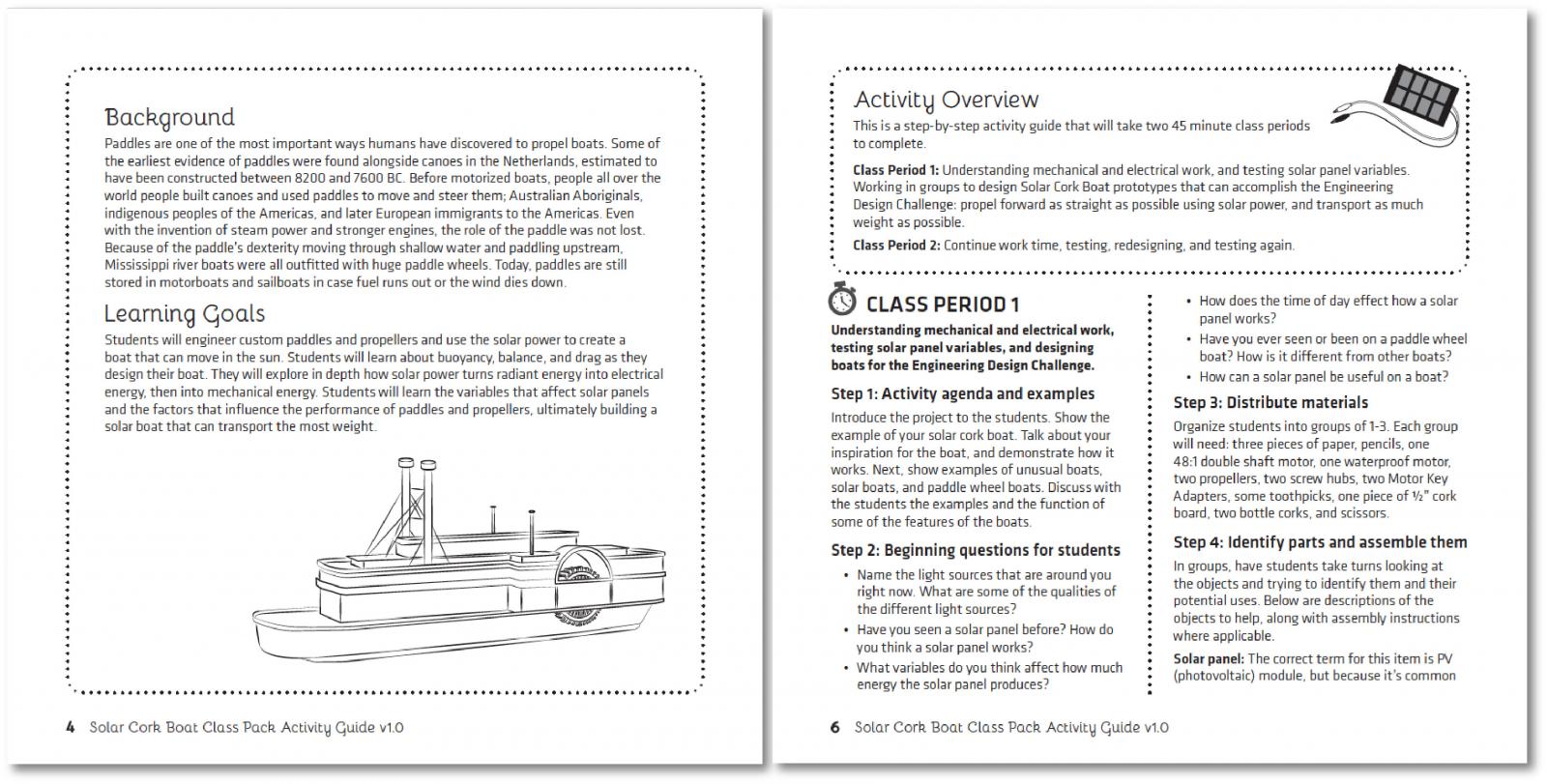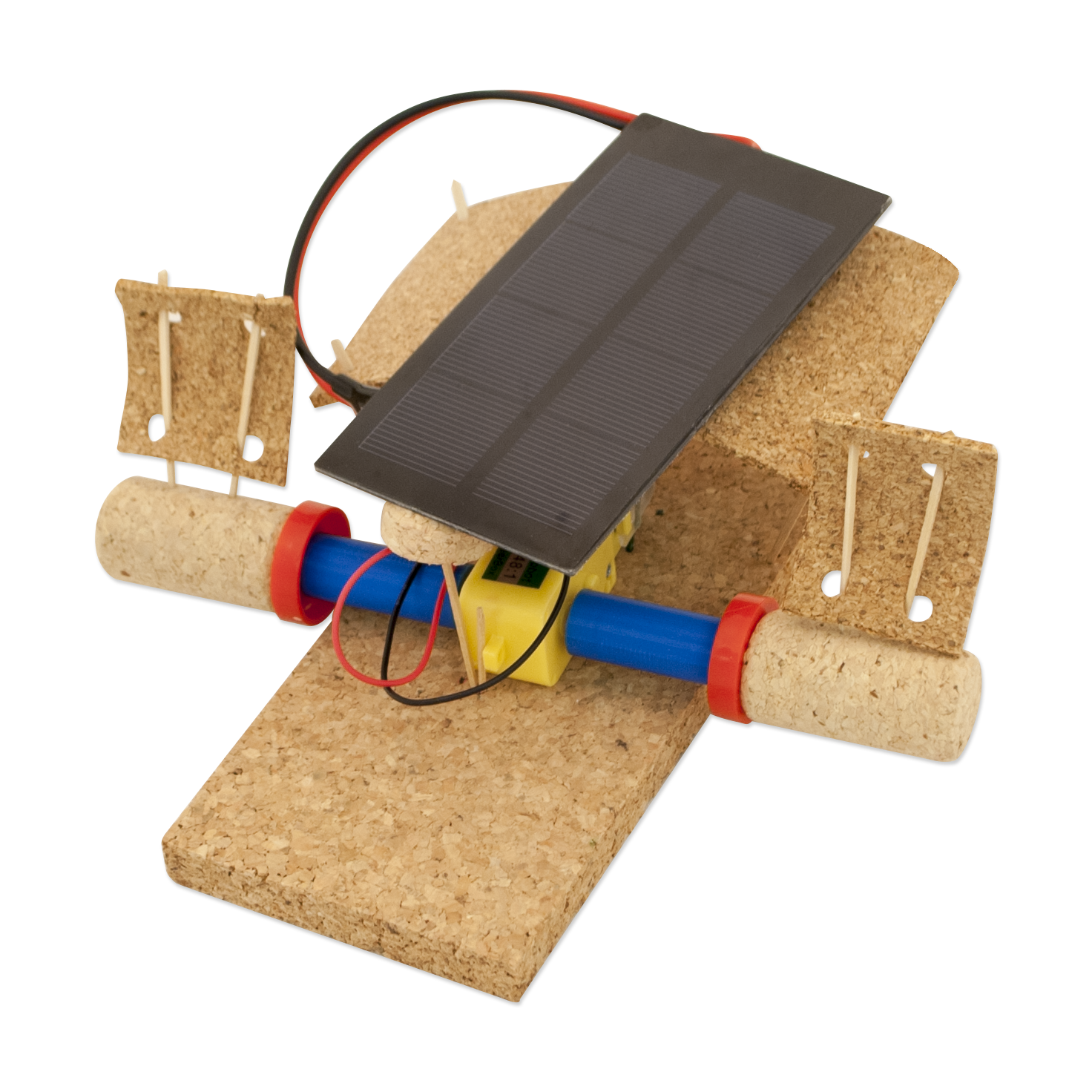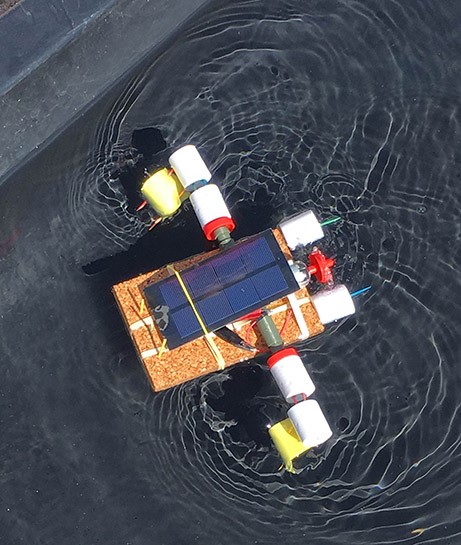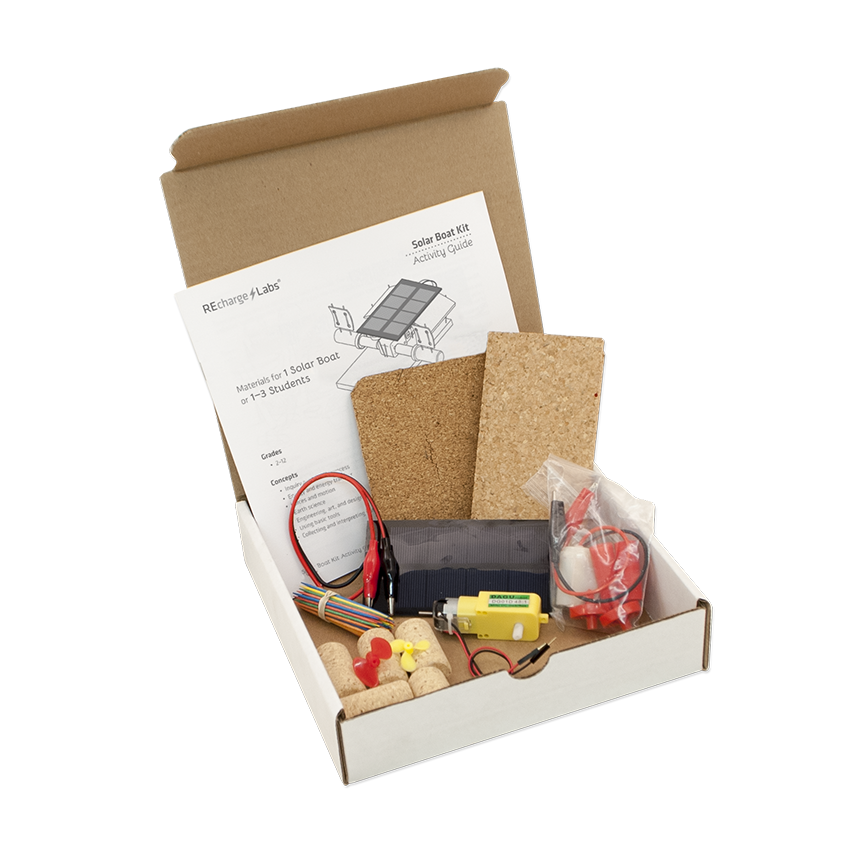REcharge Labs: Solar Cork Boat Kit
By Edwin P. Christmann
Posted on 2016-12-06
REcharge Labs: Solar Cork Boat Kit
Introduction
Teaching about solar energy in a present-day science classroom is an interesting way to have students adhere to the NGSS Standards, i.e., 4-PS3-4. Undoubtedly, new concerns on how we power our homes and businesses have bolstered research for alternatives to replace declining fossil fuels. Moreover, engaging students in activities that explore solar energy and studying ways to exploit the Sun’s energy is a creative and fun way to motivate students.
As an example, REcharge Labs offers a variety of resources that explore wind and solar power. We selected the Solar Cork Boat Kit, which demonstrates how energy from the Sun can be harnessed to do work. REcharge Labs explains that when doing this activity students “Learn basic solar circuitry to connect a motor to the solar panel, then use simple engineering design to make paddles that propel the boat as far and as fast as possible.”
The kits comes with learning objectives, materials, a list of additional supplies, and an excellent activity overview that can be used by teachers for lesson planning. Here are the directions included with the kit:
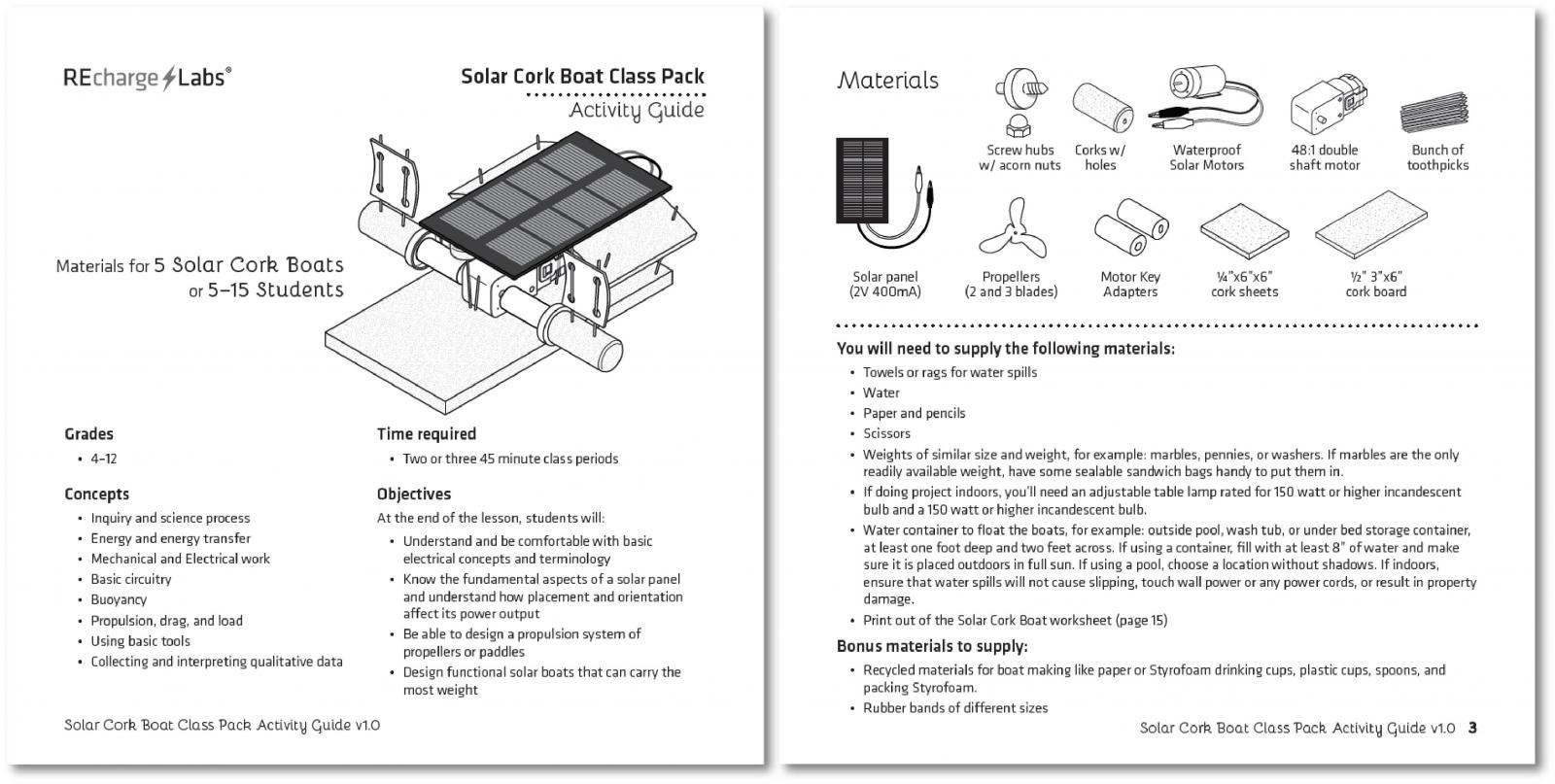
We found that during assembly of the project, the kit gives students the opportunity to learn essential scientific concepts and highlights essential critical thinking skills. For example, students can learn electrical terminology as it relates to solar energy’s transformation from a light source to an electrical motor. The span of developmental levels ranges between second and twelfth grades, which adds flexibility to the integration of this dynamic classroom activity.
As mentioned earlier, the great thing about using this product in the classroom is that it enables teachers to easily modify their lesson planning and it offers a hands-on approach to learning. For example, this kit could be used with a group of five students in the classroom or it could be a great homework project that is finished outside of the classroom. Whatever the case, constructing the boat will challenge students with engineering and science problems the go beyond solar energy. For example, students will have to consider buoyancy, water displacement, density, and challenge themselves with how to propel their vessel across the water. However, as a suggestion, students who place the constructed boat in a pond should consider how to retrieve it before its voyage. Otherwise, they will be sent back to the drawing board…
Conclusion
The Solar Cork Boat Kit is an exciting and relevant product for students across a wide-range of grade-levels. As our society continues to explore the uses of renewable energy, REcharge’s Solar Cork Boat Kit offers a learning opportunity that is of considerable interest for students. Moreover, it seems that this topic extends beyond its level of interest and could bolster plans for a better future. Undoubtedly, the Solar Cork Boat Kit offers teachers many ways of engaging students beyond lectures and involves students in the active examination of possible new forms of energy related technology applications! Without question, this activity is one that students will never forget!
Materials
This kit includes:
Solar panel
Screw hubs with acorn nuts
Corks with holes
Waterproof solar motors
48:1 double shaft motor
Toothpicks
Propellers (2 and 3 blades)
Motor key adaptors
Cork sheets
Cork board
NOT included:
Towels or rags for water spills
Water and containers
Paper and pencils
Scissors
Weights
Rubber Bands
Additional Equipment Needed:
If doing the project indoors, you’ll need an adjustable table lamp rated for 150 watt or higher incandescent bulb and a 150 watt or higher incandescent bulb.
Estimated Cost:
Single $30.00
Class (5) $135.00
http://www.rechargelabs.org/solar-cork-boat
Edwin P. Christmann is a professor and chairman of the secondary education department and graduate coordinator of the mathematics and science teaching program at Slippery Rock University in Slippery Rock, Pennsylvania. Anthony Balos is a graduate student and a research assistant in the secondary education program at Slippery Rock University in Slippery Rock, Pennsylvania.
Disclaimer: The views expressed in this blog post are those of the author(s) and do not necessarily reflect the official position of the National Science Teaching Association (NSTA).



